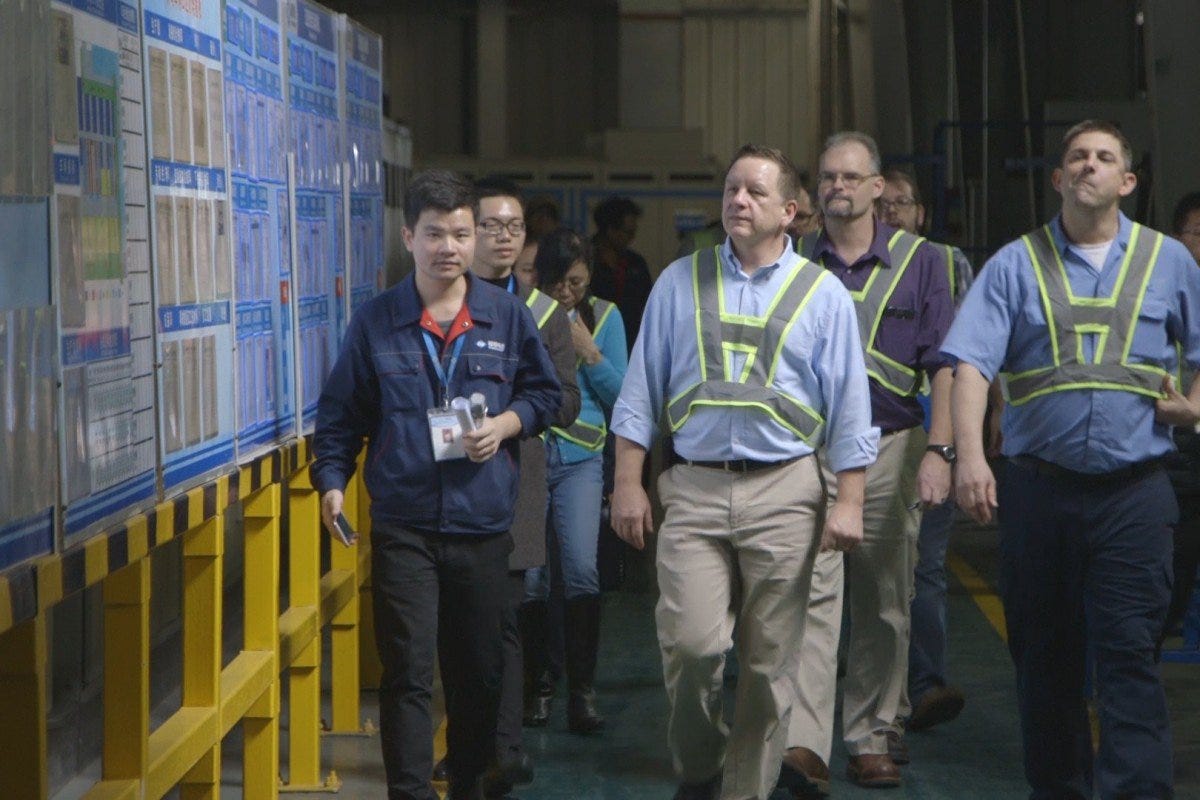
American Factory, a Sundance documentary (now on Netflix), is the story of Chinese car-glass manufacturer Fuyao’s purchase of an old GM factory in Dayton, Ohio. Fuyao brings in a set of Chinese execs — think McKinsey or Bain — to whip an American labor force into shape more consistent with the performance of workers in their factory in mainland China, who are so dialed and proficient that they look like an MLB team in contrast to the American little league team. If you were betting on where manufacturing jobs get sent based on skill alone, you would be worried for the United States.
The film juxtaposes the work ethic / mores of each country (six work days a week, with long hours in China, vs five eight hour days with ample breaks in the US) and labor rights (unions, red tape, and regulations in the US, vs workers with no voice and little in terms of basic safety rules in China).
And, of course, the Chinese execs are constantly walking the factory floor pointing at pods of workers and talking about how many people each new robot will replace and when.
Wherever you land on the labor rights spectrum, the one thing that is clear from this film is that Marx and Engels did not address the “workers of the world” merely as hyperbolic rhetoric. When there is global liquidity of labor supply, which shipping containers have enabled for a huge amount of manufacturing (and, which the transition from physical labor to data labor will only exacerbate), unionizing labor within a single country will just increase the cost of labor in that country and push labor to another country with fewer restrictions.
While the number of disenfranchised workers in the US continues to grow and we should expect labor politics to be a continued presence in national elections, the real battle for workers rights is global, and to the extent this is a battle you care to fight, it might be more important to fight for workers’ rights in China and other countries outside the US.
If your interest lies strictly in supporting domestic labor, you might couple stronger domestic labor rights with tariffs or some sort of sanctions on using foreign labor — a policy mandating that we ‘buy American’ and pay American wages. This would almost certainly lead to higher prices for consumer goods (which corporations and consumers alike would balk at), if it were possible to pull it off at all without totally disrupting production for all sorts of manufactures, which is unlikely given the interconnectivity of the global supply chain.
Finally, you might concede manufacturing jobs to countries where labor is cheaper, and correct for the losses suffered by domestic workers by redistributing corporate profits from capital holders in industries that have benefited from global labor liquidity to labor in industries where domestic jobs have emigrated… but this is easier said than done (US policy to assist workers negatively impacted by free trade / global labor competition don’t have a great track record).
American Factory is a must watch that will give you a much greater sense of urgency for remediating job loss due to global labor competition and automation.
Read next…
- Principles for Radical Tax Reform and a Universal Dividend.
- Speech is Free, Distribution is Not // A Tax on the Purchase of Human Attention and Political Power.
- Kinky Labor Supply and the Attention Tax.
- History of the Capital AI & Market Failures in the Attention Economy.
- Napkin Modeling the US Govt “P&L” // Income Tax and Redistribution Scenarios.